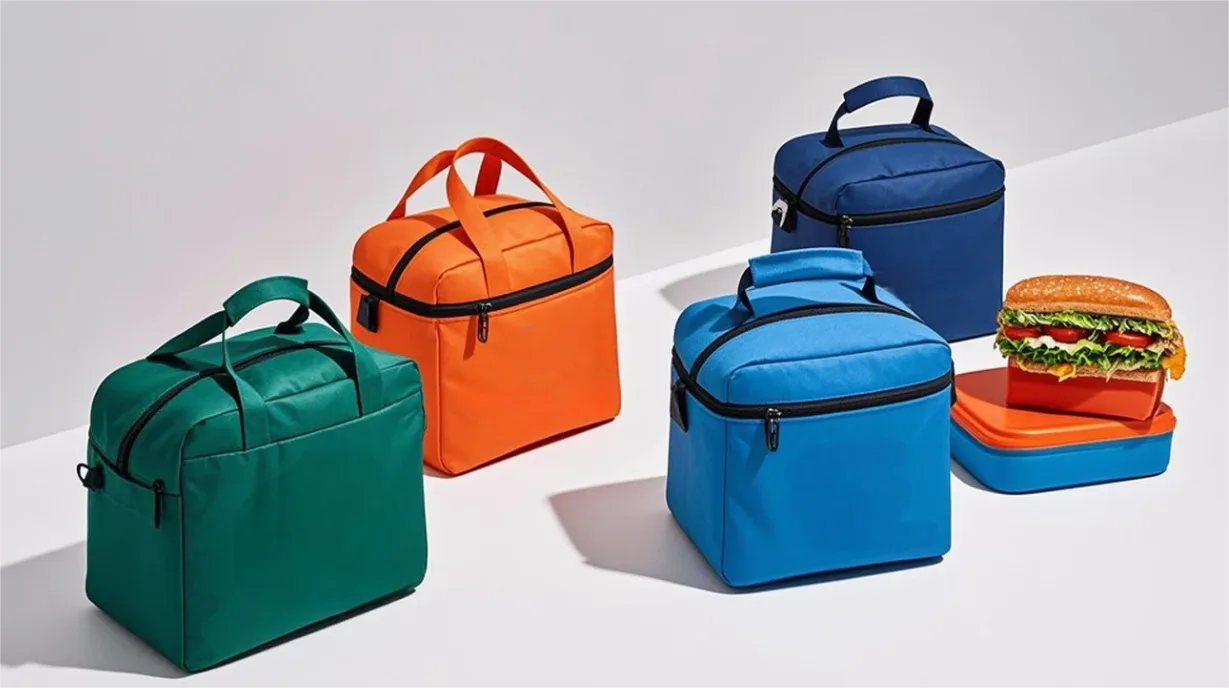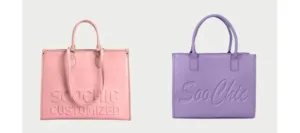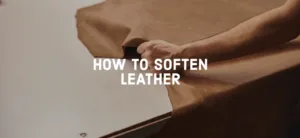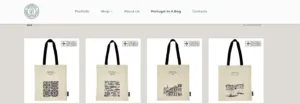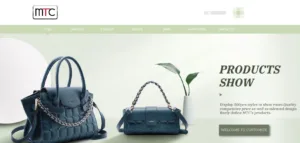Understanding the lunch bag meaning is essential for businesses looking to source functional and brand-ready meal packaging solutions. A lunch bag typically refers to a reusable container or pouch used to carry meals, snacks, or beverages, often with thermal insulation to maintain temperature. In the B2B space, custom lunch bags are widely used by food brands, schools, corporate wellness programs, and promotional product companies. Whether you’re selecting a simple tote or a high-performance insulated lunch bag supplier, knowing the right lunch bag materials can directly impact durability, food safety compliance, and brand presentation. This guide offers a complete overview of common materials used in lunch bag manufacturing and how to make the right choice for your business needs.
Contents
Common Materials Used in Lunch Bags
The choice of material is a key factor when designing or sourcing lunch bags, as it directly influences weight, durability, insulation, safety, and sustainability. For B2B buyers—such as food brands, retail chains, or promotional product suppliers—understanding the properties of each material can help in selecting the right lunch bag solution that aligns with product positioning and customer expectations. Working with a reliable custom lunch bag factory or OEM lunch bag manufacturer ensures not only access to a wide range of materials but also professional guidance on compliance, printing, and structural design. Choosing the right lunch bag supplier ultimately streamlines the sourcing process and helps deliver functional, brand-consistent products to the market.
| Material | Features | Application/Benefits |
|---|---|---|
| Polyester & Nylon |
Lightweight Durable Water-resistant Support various printing methods Cost-effective for large-volume production |
Ideal for everyday custom lunch bags Suitable for branding |
| EVA / PEVA Lining |
Food-safe Leakproof inner lining Flexible BPA-free Alternatives to PVC Washable |
Often paired with outer fabrics Creates safe, washable lunch bags |
| Aluminum Foil |
Thermal reflectivity Helps maintain food temperature |
Frequently used in insulated lunch bags Especially beneficial for hot or cold meal storage during transportation |
| Insulated Foam / EPE Foam |
Foam layers (EPE: Expanded Polyethylene) Sandwiched between outer shell and inner lining Enhances insulation |
Helps maintain temperature for longer periods Suitable for school lunches, outdoor activities, and food delivery services |
| Kraft Paper Laminate / Recycled Materials |
Eco-friendly Laminated kraft paper or recycled PET (rPET) fabrics Treated for moisture resistance Natural, minimalistic look |
Sustainable alternative for businesses prioritizing eco-friendly packaging |
| Cotton & Canvas |
Natural materials Reusable Premium look and feel Durable Soft feel Compatible with eco-branding |
Used in reusable and premium lunch bags Popular for employee gifts, wellness kits, and boutique food packaging
|
Selecting the right lunch bag materials is more than a matter of style—it affects functionality, brand image, and compliance with safety or sustainability standards. B2B buyers should evaluate not only the performance of each material but also its adaptability for customization, printing, and bulk production needs.
Material Selection by Function
Building on the various materials commonly used in lunch bags, selecting the right combination depends largely on the specific functions your customers prioritize. Whether the focus is on effective insulation, lightweight portability, or sustainable design, understanding how different materials contribute to these goals will help you make informed decisions. Here is a breakdown of typical use cases and the optimal material choices for each:
Need Strong Insulation? For brands requiring reliable thermal control—such as meal delivery services, catering kits, or outdoor lunch bags—the best option is a combination of aluminum foil and EPE foam.
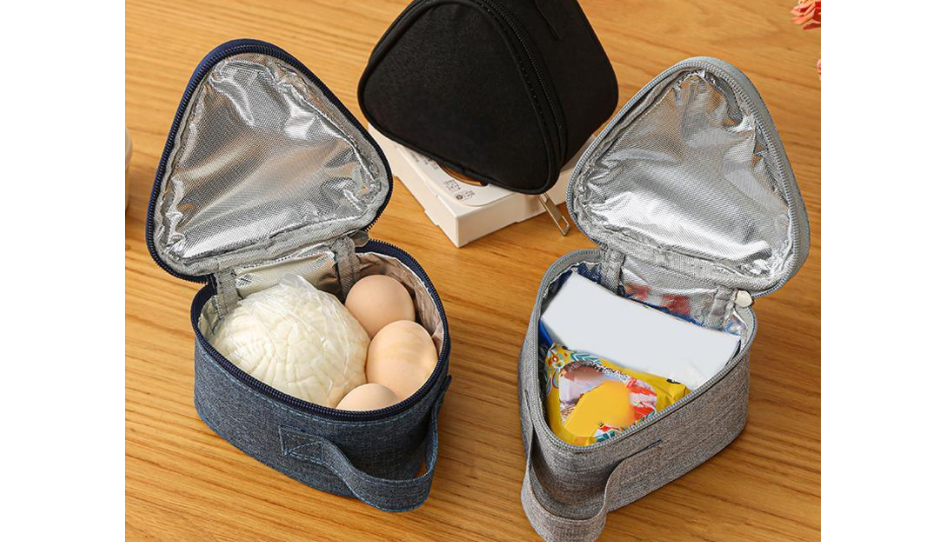
-
Aluminum foil reflects heat and maintains internal temperature.
-
EPE foam provides insulation and cushioning.
Together, they create the classic insulated lunch bag structure, perfect for keeping food warm or cool for several hours.

Need a Lightweight and Foldable Design? For companies targeting school children, commuters, or promotional giveaways, PEVA lining paired with nylon or polyester fabric offers an ultra-light and collapsible solution.
-
PEVA ensures the bag is food-safe and leak-resistant.

-
Nylon or polyester makes the bag flexible, durable, and printable.
This combo is ideal for low-cost, high-volume orders where ease of carrying and space-saving are priorities.

Need Sustainable & Eco-Friendly Appeal? If your brand emphasizes sustainability, opt for natural or recycled materials such as cotton, canvas, or laminated kraft paper with a thin PE lining for moisture resistance.
-
Cotton & canvas are reusable, biodegradable, and perfect for eco-conscious branding.
-
Kraft paper with recycled PE offers a paper-based look while maintaining basic durability.
These options are often favored by wellness brands, corporate gifting programs, and environmentally aware retailers.
Selecting materials by functional purpose helps B2B buyers strike a balance between cost, performance, and brand value. Whether you’re launching a premium eco product or a mass-market insulated carrier, aligning material choices with intended use will enhance product acceptance and ensure your lunch bag manufacturing process meets customer needs.
Compliance & Sustainability in Custom Lunch Bags
In today’s packaging industry, compliance and sustainability have become two of the most critical factors influencing the selection of materials for custom lunch bags. For B2B buyers, ensuring that lunch bags meet international safety standards is as important as addressing the growing demand for eco-friendly, recyclable, and biodegradable options. These considerations not only protect consumers but also enhance brand reputation and meet regulatory requirements across different markets.
Regulatory Compliance: FDA, REACH, LFGB and More
When manufacturing lunch bags intended for food contact, it is essential that materials comply with relevant food safety regulations.
-
The FDA (Food and Drug Administration) in the United States sets strict guidelines on materials that can safely contact food, ensuring no harmful chemicals migrate into the contents.
-
The REACH (Registration, Evaluation, Authorization and Restriction of Chemicals) regulation in the European Union requires manufacturers to document and limit the use of hazardous substances.
-
The LFGB (Lebensmittel- und Futtermittelgesetzbuch) is the German Food and Feed Code, a standard that guarantees food contact materials are safe and hygienic for consumers.
Many B2B lunch bag suppliers now provide certification or test reports demonstrating compliance with these standards, which is often a prerequisite for entering global markets or partnering with large retailers.
Sustainability: Biodegradability, Recyclability, and RPET
Alongside compliance, sustainability is a key driver in material selection. Increasingly, consumers and businesses alike prefer packaging that reduces environmental impact, aligning with corporate social responsibility goals. Key aspects to consider include:
-
Biodegradability: Materials that can naturally decompose, such as certain bio-based plastics or kraft paper laminates, help reduce landfill waste.
-
Recyclability: The ability to recycle lunch bags after use is crucial for minimizing the environmental footprint. Fabrics like polyester made from RPET (recycled polyethylene terephthalate) are gaining popularity as they combine durability with recycled content.
-
Use of Recycled Materials: Incorporating post-consumer recycled materials not only reduces resource consumption but also appeals to eco-conscious brands seeking sustainable packaging solutions.
When sourcing lunch bags, B2B buyers should inquire about the environmental certifications (such as GRS—Global Recycled Standard, or FSC for paper materials) and ensure suppliers follow sustainable manufacturing practices.
The Balance Between Compliance and Sustainability
Achieving both compliance and sustainability can be challenging, as some biodegradable materials may not yet meet all regulatory standards for food contact. However, many manufacturers are innovating in this space by developing FDA-compliant biodegradable liners and using non-toxic dyes and adhesives to ensure safety without compromising environmental responsibility.
Exploring Customization Options in Custom Lunch Bags

Material choice plays a foundational role in determining how versatile and brandable a custom lunch bag manufacturer can be. From logo printing and color application to handle design and closure structure, each material brings its own limitations and advantages that directly influence customization outcomes.
Take polyester and nylon, for example—these synthetic fabrics are smooth, durable, and highly receptive to screen printing, heat transfer, or sublimation techniques. They are ideal for brands looking to showcase vibrant colors, detailed logos, or promotional messaging across a wide surface area. In contrast, cotton and canvas offer a more organic feel and are commonly used with embroidery or minimalist prints, well-suited for premium or eco-conscious branding.
The inner lining also influences what is technically possible in lunch bag design. Materials such as EVA or PEVA are flexible, food-safe, and can be seamlessly heat-sealed, making them excellent choices for leak-proof constructions. In insulated lunch bags, layers like aluminum foil and EPE foam require outer fabrics that are both supportive and brandable, without compromising the bag’s ability to retain temperature.
Handle configurations and structural features are likewise shaped by material properties. Sturdy kraft paper laminates or canvas can accommodate stitched handles or reinforced grip points, often seen in upscale or gift-style bags. Lightweight polyester bags, on the other hand, are better suited to webbing straps or fold-flat designs that maximize portability and minimize bulk. Additional features such as zippers, mesh pockets, side compartments, or velcro tabs are easier to integrate when working with pliable, stitch-friendly materials.

By aligning material selection with intended customization goals, brands and corporate buyers can ensure that the final product not only meets functional needs but also communicates identity effectively. Early-stage collaboration with manufacturers around these material considerations is key to achieving a customized lunch bag that delivers both performance and visual appeal.
Conclusion
Choosing the right material for your custom lunch bags goes far beyond aesthetics—it directly impacts your brand image, the end-user experience, and your ability to meet global compliance standards. From insulation and durability to eco-friendliness and printability, each material plays a strategic role in shaping how your product is perceived and performs in the market.
For B2B buyers, understanding the relationship between materials and functionality is the first step toward building a product that aligns with your lunch bag brand values and customer expectations. Whether your focus is on food safety certification, sustainable sourcing, or high-impact customization, making informed material choices is crucial for long-term success.
Looking to develop lunch bags that combine function, compliance, and brand appeal?
Let’s talk — our team is ready to help you choose the best materials and create a tailored solution that meets your business needs.

